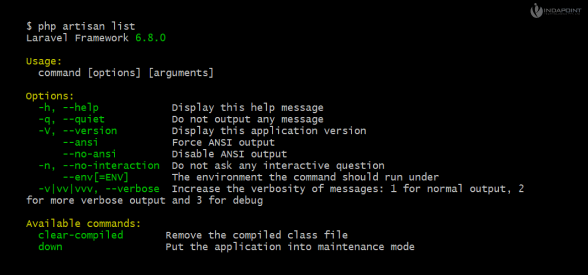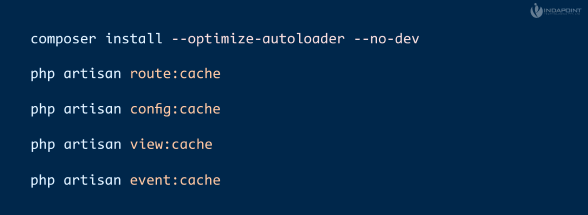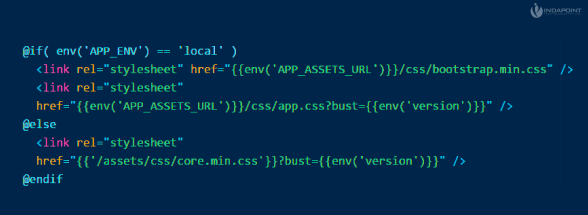How To Optimize Laravel for Performance
July 18, 2022

The Laravel framework is now a huge hit for creating business and e-commerce applications. The majority of businesses favor Laravel when creating their business applications. But today, we’ll only pay attention to performance improvement.
Laravel powers over a million websites, and because Google emphasizes the importance of website speed and users are becoming less and less tolerant of an incredibly smooth user experience, some people believe that PHP and frameworks like Laravel are less performant than other frameworks. It’s conceivable that this is valid, yet it doesn’t infer there is nothing you can do about it. In this article, we’ll meticulously describe the situation on the most proficient method to improve Laravel for execution.
Expert Advice on Laravel Optimization
This article will go over some crucial recommendations for optimizing your Laravel website, each with detailed instructions. Even though some of the processes might sound complicated, you can easily follow them and repeat them on your own screen.
Command Artisan Optimize
Many articles promoting the usage of the Artisan Optimize Command may be found online with a basic search. This used to be helpful, but since PHP op-code caching has greatly improved, it is no longer necessary. Since Laravel 5.6, it has been totally removed after being deprecated in Laravel 5.5. Therefore, avoid seeking this answer because it will be obsolete.
Implementing Artisan Commands

It’s not truly a hack, despite the fact that Artisan instructions are frequently given as part of the optimization advice. Simply put, Artisan is a Laravel command-line interface that enables you to carry out instructions using short commands.
Optimize Composer
Installing all dependencies in production is a frequent error committed by Laravel developers. Some development tools, like Ignition, save a record of your logs, dumps, and queries in memory to provide you with a helpful error message and context for debugging. Although this is helpful in development, it may cause your application to run slowly in production.
Settings Caching
Any modern web developer will agree that caching your files is a great technique to speed up website performance and reduce loading times. Stacking times are fundamentally diminished by making an arranged, easy-to-peruse format of your site that your servers read rather than all of your web documents each time somebody stacks your website.
Route Cache

Caching application routes is possible with Laravel. When an application has numerous paths, this capability becomes quite important. All of the routes are initially read by Laravel from the route files, and they are then converted into an array. Every time we refresh the page or send a request to the Laravel application, Laravel reads the routes from the files, turns them into an array, and uses those.
But Laravel gives us a single command that will read every route in the application, transform it into an array, and cache it.
Make Text Format Files Have Compression Headers
Application performance may be significantly impacted by compression headers. Since they are not text documents, most picture designs are now compacted. This means that image formats do not require compression.
For a huge presentation gain, you can set up gzip or brotli at the web server or CDN level (preferably both since brotli may not be upheld for more established programs).
Eliminate Package Usage
The open-source community holds Laravel in high regard, and nearly every day, new packages or updates to existing packages are made available. This enables us to utilize these packages’ functionalities directly in our application.
In order to include these packages, we must add them to the composer.json file.
However, we must carefully consider the dependencies of the packages before incorporating new ones into the program. Not all of the packages were created to fulfill a specific goal. Some of the packages are designed to do a variety of tasks. If we include such packages with numerous dependencies, the application’s size will increase.
Asset Bundling

All Laravel applications by default include the Laravel Mix package from Laravel. With the help of various popular CSS and JavaScript preprocessors, you can define Webpack build-ups for your PHP apps utilizing Laravel Mix’s useful API. Laravel Mix is a very helpful tool for the compilation of application assets, such as JavaScript, CSS, and other types. Laravel Mix enables us to mix multiple CSS files into a single file.
Find the Performance Bottlenecks in Your App
Determine performance bottlenecks if some of your pages take a long time to load or use a lot of memory. Laravel Telescope, Laravel Debugbar, and Clockwork are just a few of the many tools in the Laravel ecosystem that can assist you in doing that.
Indexing a database

In Laravel, we employ a number of techniques, including asset minification, data loading, and caching, to improve application performance. In essence, this approach works at the database level.
Data set ordering is basically information coordinating that depends on at least one data set table segment. The primary objective of ordering is to make information recovery quicker. It makes it easier to locate the data without having to look through every row each time the database is queried.
Activate Eager Loading

Instead of being a straightforward command that you can issue via Artisan, eager loading is a method of coding.
Sending a bigger, various leveled information structure with a sizable amount of data for the question is known as energetic stacking. Even while sending a bigger query might take more memory or data, since the internet is already moving at lightning-fast speeds, most users won’t even notice a few extra kilobytes or even megabytes. These larger data requests are preferable for the server because they just require one huge query to be processed rather than hundreds of smaller requests to find the user’s data. The inverse of this is called lazy loading, which your website may be used by default. In this case, each individual piece of data is retrieved only when it is needed, which results in a lot more server calls.
Final Thoughts
Due to its user-friendliness, Laravel has become well-known in the web development community. Fastness and simplicity are inherent in it. Laravel is not impervious to bloat, though, and can greatly profit from general maintenance and optimization advice.
The amazing benefits of Laravel may be combined with the increasing demand for a quick and responsive website by utilizing any of the best optimization strategies we’ve provided here. This will make Google (as well as your website visitors and users!) extremely happy.







